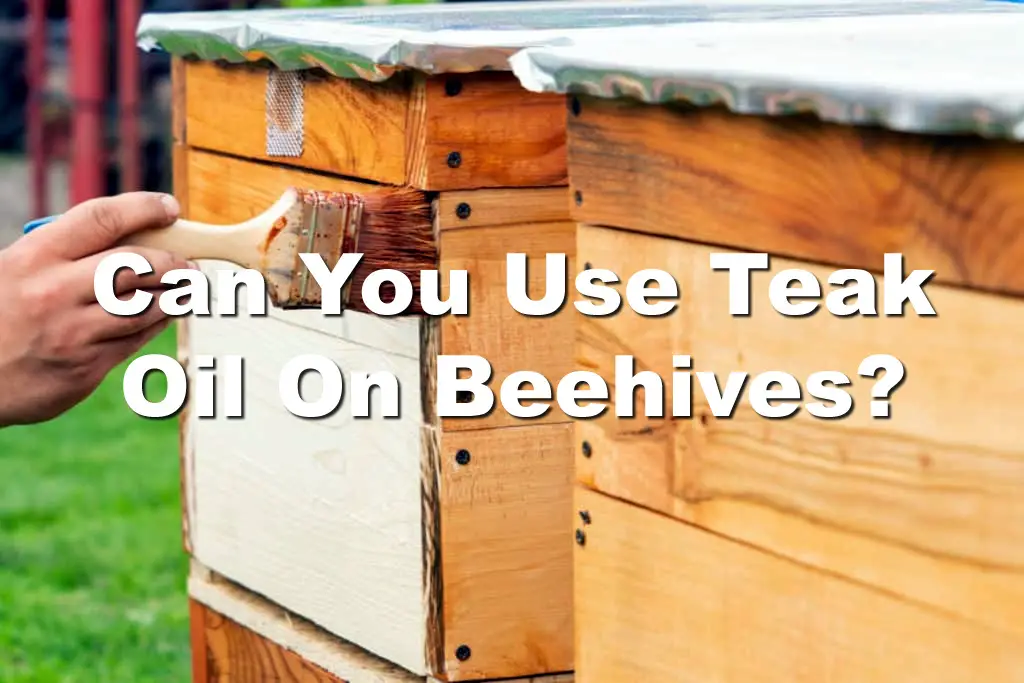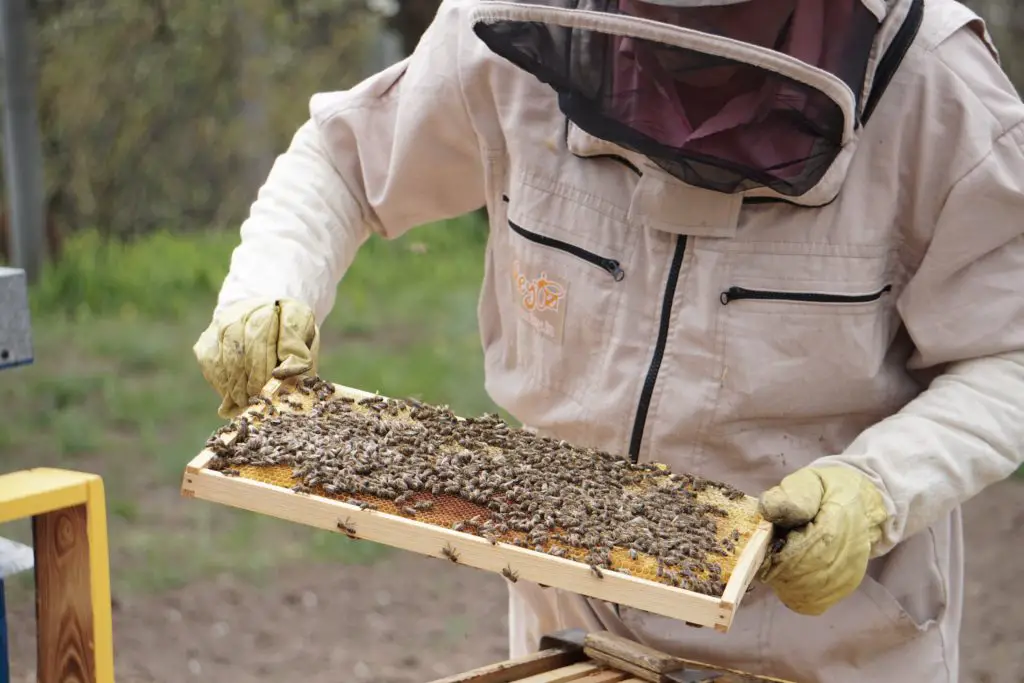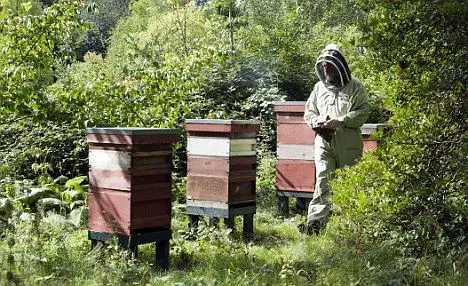Affiliate Disclaimer - As an Amazon Associate I earn from qualifying purchases.
It supports the website. So, Thank you
Ensuring that your bees remain healthy and active is one of the most important parts of being a beekeeper. But when it comes to preserving the wood that your hive is made from, did you know that some products can be incredibly dangerous for your colony?
This begs the question of what the best oil is to use on beehives. There are a whole host of different products out there and teak oil is a favorite for a lot of uses. But can you use teak oil on beehives?
No! You should NEVER use teak oil on a beehive as it contains petroleum distillates. Some of the most popular brands of teak oil contain as much as 70% kerosene which is known to irritate bees and could cause them to become aggressive and sting.
Of course, it is very important to maintain your beehive so you will need to apply some kind of treatment to the wood. In this guide, we will look at some of the best oils to use on your beehive without upsetting your colony.
What’s The Problem With Teak Oil?
A lot of people think that using teak oil on a beehive is a good idea since many teak oil wood treatments contain linseed oil which is OK to use on beehives. However, some of the other ingredients are not as suitable for bees and this includes kerosene.
Bees are easily aggravated by the smell of kerosene and this can cause them to become aggressive. As a beekeeper, you’ll know that aggressive bees mean bees that sting and this is something we all want to avoid.
That said, once the teak oil has dried, the scent will dissipate and this will no longer be a problem for the bees. So if you’re planning to treat the hive and let it fully dry before adding any bees then this might be a viable option. But since there are so many other excellent choices that won’t annoy your colony, you have to ask yourself whether teak oil is really necessary.
What Is The Best Wood Treatment For Beehives?
When it comes to keeping your beehive well maintained, a wood treatment is essential as this protects against moisture. It is vital that you apply a water-repelling treatment before introducing the bees and top this up periodically. If you don’t then the bees will become damp and they’ll use a lot of their energy to dry up the hive, lessening their productivity and wearing them out.
With that in mind, it’s easy to see why choosing the right wood treatment for your beehive is important. Tung oil is widely accepted as one of the most appropriate wood oils for beehives. There are a lot of benefits to it but you need to make sure you’re choosing a bee-friendly product.
Why Is Tung Oil So Good For Beehives?
Tung oil comes from the tung tree which is a Chinese tree, although it is sometimes found growing in other Asian nations. The reason that tung oil is such an excellent preservative for wood is that it is incredibly waterproof.
There are lots of different oils out there that are suitable for use on a beehive but tung oil is one of those that are 100% non-toxic and it’s incredibly eco-friendly. Of course, you will need to make sure that your chosen product is completely non-toxic but we’ll cover that in more detail later on.
The main benefit of tung oil is that it is totally safe for your colony. Provided you purchase a pure blend, there won’t be any synthetic ingredients that could be harmful to the bees. Do keep in mind, however, that you will need to avoid applying any other agents to the oil such as thinning solvent as this will make the blend toxic.
Another great thing about tung oil is how long-lasting it is. While some wood treatments simply sit on the surface of the wood, tung oil bonds with it. This creates a waterproof barrier that really does stand the test of time. In fact, once you initially apply tung oil, it’ll preserve the wood for many years, as long as you remember to top up the oil annually.
You will also bring out the natural color of the wood very well when using tung oil. A lot of people like to use paint or wood stain but this changes the color and doesn’t give such a natural appearance.
Buy Tung Oil:
Using Tung Oil On Your Beehive – Tips and Advice
Applying tung oil to your beehive is incredibly easy and doesn’t take a long time. You will need to apply it in coats so the work needs to be done over the course of a few days but other than that, it’s foolproof. It is important to allow proper time for the oil to dry between coats which usually takes around 24 hours.
- Before you do anything, you will need to make sure to choose the right product for your beehive. Not all tung oil is 100% pure but this is something incredibly important to look out for. If the product contains any solvents, thinners or other toxic ingredients then it should NOT be used for your hive as it will pose a health risk to your bees.
- When it comes to applying the oil to both the inside and outside of the hive, the best method is to use either a cloth or a bristle brush. When using cloth, choose a lint-free material and always make sure that your applicator is free from any other products.
- Before you apply the first coat of tung oil, check that the wood is completely clean and free from any debris. It’s also a really good idea to sand the wood before applying the oil, especially if this isn’t the first coat. By sanding, you ensure that the oil has a smooth surface to adhere to.
- After sanding, you can simply apply the oil directly to the surface of the wood. Applying it side to side is the best approach but notice that it will quickly soak in. That’s not a bad thing as this means the oil is penetrating the wood and protecting it from the inside out.
- Don’t be afraid to take a ‘more is more’ approach when applying tung oil to your beehive. You don’t want to slop it on so much that it won’t dry but you can be pretty liberal in how much you put on. You need to be generous since the oil will absorb into the wood; applying enough ensures that it’ll fully saturate it.
- Once you have finished, you’ll notice that the beehive appears to be dry after a few short hours but it’s still not time to apply a second coat. While it may look dry, you can bet your bottom dollar that it’s not. So just give it time and be patient. You may be able to apply a second coat after 24 hours but if you can, then wait as long as 48 hours.
- When applying the second and third coats, you don’t need to be quite as liberal. Because of this, the drying time won’t be as long and in some cases, it may only be a couple of hours until it’s ready for the next coat. When the wood stops absorbing oil, it’s time to cure it.
- As a safety note, please keep in mind that tung oil is a flammable substance. Once you have finished working on your beehive, it is essential that you safely dispose of any brushes and rags you used to apply it. Failing that, you can thoroughly wash the application tools with soap and water, allowing them to dry fully.
Conclusion
Choosing the right wood treatment for your beehive is of the utmost importance. Get it wrong and you may risk the health of your bees.
A lot of people wonder if you can use teak oil on beehives. While you could use it, it’s important to remember that teak oil contains ingredients that are irritating to bees. There are plenty of other choices out there so there’s really no need to use teak oil.
Tung oil is considered to be one of the best natural products for treating wood used to make beehives. It is completely non-toxic; provided the manufacturer hasn’t included any additives, creates a waterproof and attractive finish, and is very long-lasting.














